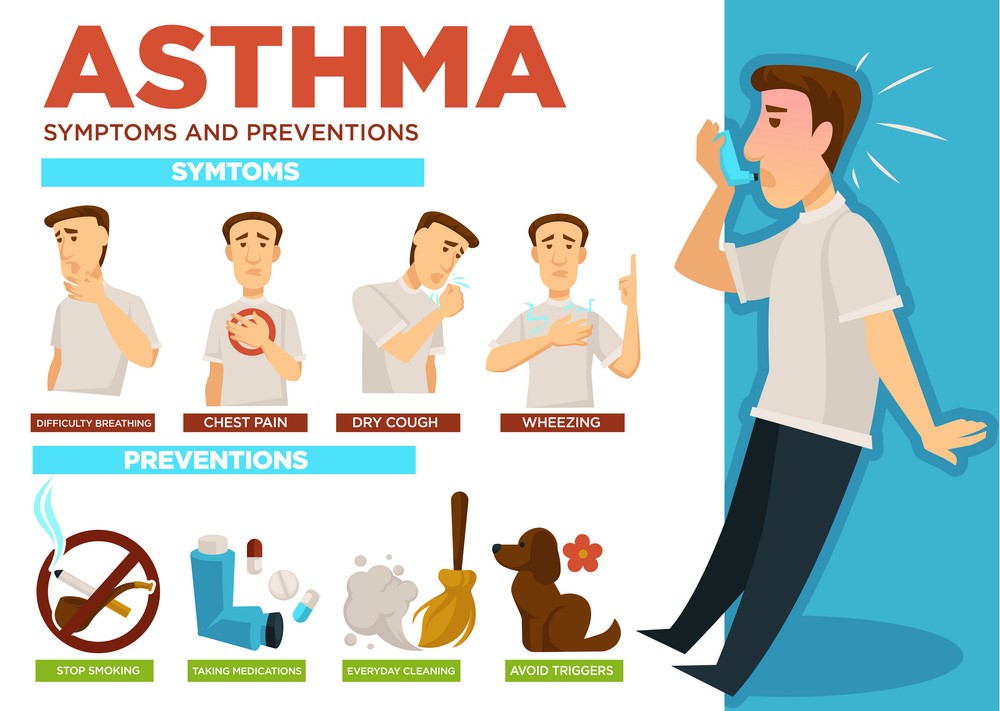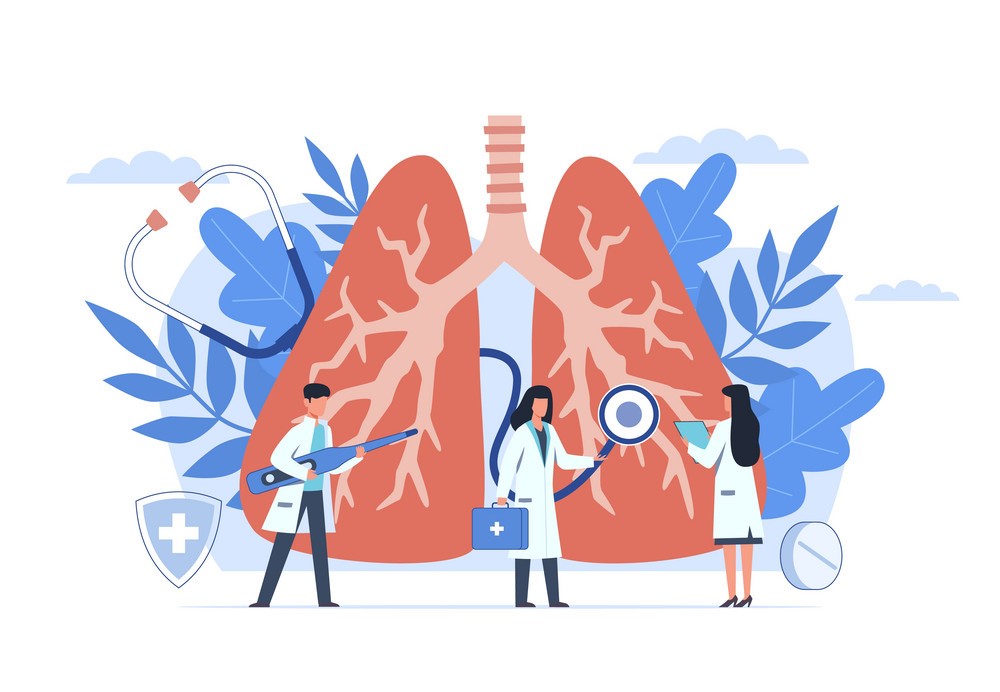Steps in testing and diagnosis
Diagnosing asthma generally includes a medical history, physical exam and lung tests.
An asthma diagnosis is based on several factors, including a detailed medical history, a physical exam, your symptoms, and overall health and test results.
Medical history
The first step in diagnosing asthma is talking to your doctor about your symptoms and your health. This can provide clues as to whether asthma or something else is causing your symptoms. Your doctor will likely ask about your symptoms and your exposure to substances that have been linked to asthma. Questions might include:
- What are your symptoms? When do they occur? What, if anything, seems to trigger them?
- Are you often exposed to tobacco smoke, chemical fumes, dust or other airborne irritants?
- Do you have hay fever or another allergic condition?
- Do you have blood relatives, such as a parent, aunt, grandparent or cousin, with asthma, hay fever or other allergies?
- What health problems do you have?
- What medications or herbal supplements do you take?
- What is your occupation?
- Do you have pet birds, or do you raise pigeons?
Physical exam
Your doctor may:
- Examine your nose, throat and upper airways.
- Use a stethoscope to listen to your breathing. Wheezing — high-pitched whistling sounds when you breathe out — is one of the main signs of asthma.
- Examine your skin for signs of allergic conditions such as eczema and hives.
Your doctor will want to know whether you have common signs and symptoms of asthma, such as:
- Recurrent wheezing
- Coughing
- Trouble breathing
- Chest tightness
- Symptoms that occur or worsen at night
- Symptoms that are triggered by cold air, exercise or exposure to allergens

Asthma signs and symptoms in children
In children, additional signs and symptoms may signal asthma. These may include:
- Louder or faster than normal breathing
- Frequent coughing or coughing that worsens after active play
- Coughing, clear mucus and a runny nose caused by hay fever
- Frequent missed school days
- Limited participation in physical activities
Tests
Your doctor may use several tests to determine how well your lungs are working.
Spirometry
This is the main test doctors generally use to diagnose asthma in people 5 years or older.
To help determine how well your lungs are working (pulmonary function), you take a deep breath and forcefully breathe out (exhale) into a tube connected to a spirometer. This records both the amount (volume) of air you exhale and how quickly you exhale. If certain measurements are below normal for a person your age, it may indicate that asthma has narrowed your airways.
After taking lung test measurements, your doctor may ask you to inhale an asthma drug to open air passages and then do the test again. Showing significant improvement after taking the medication could mean you have asthma.
Challenge test
If your spirometer results are normal or near normal, your doctor might try to trigger asthma symptoms by having you inhale a substance that causes the airways to narrow in people with asthma, such as methacholine (meth-uh-KO-leen).
If you appear to have asthma triggered by exercise (exercise-induced asthma), you may be asked to do physical activity to see whether it triggers symptoms.
After either action, you’ll retake the spirometry test. If your spirometry measurements remain normal, you probably don’t have asthma. But if your measurements have fallen significantly, it’s possible you do.

Lung tests in children
Doctors seldom do lung tests in children under age 5. Instead, diagnosis is generally based on a child’s signs and symptoms, medical history, and physical examination. It can be especially difficult to diagnose asthma in young children because there are many conditions that cause asthma-like symptoms in this age group.
If your child’s doctor suspects asthma, the doctor may prescribe a bronchodilator — a drug that opens the airways. If your child’s signs and symptoms improve after using the bronchodilator, your child may have asthma.
Exhaled nitric oxide test
You breathe into a tube connected to a machine that measures the amount of nitric oxide gas in your breath. Nitric oxide gas is produced by the body normally, but high levels in your breath can mean your airways are inflamed — a sign of asthma.
Additional tests: Ruling out conditions other than asthma
If your doctor suspects that you have a condition in addition to or other than asthma, you may need tests such as:
- X-ray or computerized tomography (CT) imaging of your chest
- CT scans of your sinuses
- Blood tests
- Gastroesophageal reflux assessment
- Examination of the phlegm in your lungs (sputum induction and examination) for signs of a viral or bacterial infection
Your doctor may also want to see whether you have other conditions that often accompany asthma and can worsen symptoms. These include:
- Heartburn (also known as gastroesophageal reflux disease or GERD)
- Hay fever
- Sinusitis
Your doctor may also perform allergy tests. These can be skin tests, blood tests or both. Although not used to diagnose asthma, allergy tests can help identify an allergic condition, such as hay fever, that may be causing your symptoms or worsening existing asthma.
Sometimes, diagnosing the cause of breathing problems is a challenge. It can be difficult to differentiate asthma from other conditions — particularly in young children.
When asthma coexists with another condition that affects breathing, it can further complicate diagnosis.
Even if a diagnosis isn’t certain, your doctor may prescribe medications or other treatment to see what helps. It may take time — and patience — to get the correct diagnosis and determine the best course of treatment.
Prepared : Nikta Hosseini – Biomedical Engineering Student
Source : www.healthdirect.gov.au
Lung tests in children
Doctors seldom do lung tests in children under age 5. Instead, diagnosis is generally based on a child’s signs and symptoms, medical history, and physical examination. It can be especially difficult to diagnose asthma in young children because there are many conditions that cause asthma-like symptoms in this age group.
If your child’s doctor suspects asthma, the doctor may prescribe a bronchodilator — a drug that opens the airways. If your child’s signs and symptoms improve after using the bronchodilator, your child may have asthma.
Exhaled nitric oxide test
You breathe into a tube connected to a machine that measures the amount of nitric oxide gas in your breath. Nitric oxide gas is produced by the body normally, but high levels in your breath can mean your airways are inflamed — a sign of asthma.
Additional tests: Ruling out conditions other than asthma
If your doctor suspects that you have a condition in addition to or other than asthma, you may need tests such as:
- X-ray or computerized tomography (CT) imaging of your chest
- CT scans of your sinuses
- Blood tests
- Gastroesophageal reflux assessment
- Examination of the phlegm in your lungs (sputum induction and examination) for signs of a viral or bacterial infection
Your doctor may also want to see whether you have other conditions that often accompany asthma and can worsen symptoms. These include:
- Heartburn (also known as gastroesophageal reflux disease or GERD)
- Hay fever
- Sinusitis
Your doctor may also perform allergy tests. These can be skin tests, blood tests or both. Although not used to diagnose asthma, allergy tests can help identify an allergic condition, such as hay fever, that may be causing your symptoms or worsening existing asthma.
Sometimes, diagnosing the cause of breathing problems is a challenge. It can be difficult to differentiate asthma from other conditions — particularly in young children.
When asthma coexists with another condition that affects breathing, it can further complicate diagnosis.
Even if a diagnosis isn’t certain, your doctor may prescribe medications or other treatment to see what helps. It may take time — and patience — to get the correct diagnosis and determine the best course of treatment.
Prepared : Nikta Hosseini – Biomedical Engineering Student
Source : www.healthdirect.gov.au



